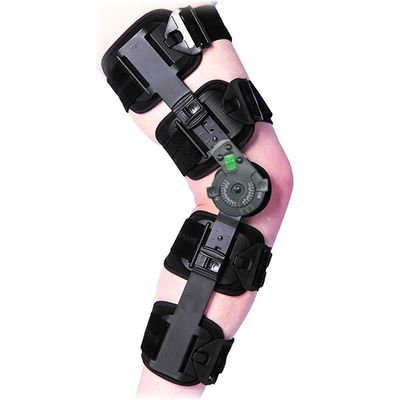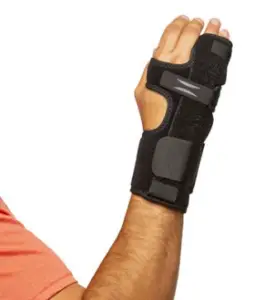Orthopedic Braces Prescription
In most cases, whether you need a prescription for a brace depends on the type of brace and the situation. Here’s a breakdown:
Medical Necessity and Insurance: If a brace is medically necessary and you want insurance or Medicare to cover the cost, you typically need a prescription. For instance, braces used for post-surgical support, chronic conditions, or injury recovery often require a doctor’s order for insurance reimbursement.
Over-the-Counter Braces: Many braces, like basic knee braces or wrist supports, can be purchased without a prescription at pharmacies or online. These are typically for mild injuries or preventive support.
Custom or Specialized Braces: For more complex conditions (e.g., scoliosis braces, custom-fitted knee braces, or spinal braces), a prescription is usually required. These braces are often fitted to the patient and are more specialized.
Legal Requirements: Some braces, especially those that claim to have a therapeutic or corrective effect, may be regulated as medical devices and require a prescription based on local regulations (e.g., U.S. FDA regulations).
If you’re unsure, it’s best to consult a healthcare provider, as they can determine the necessity and help you with the right type of brace.
Trend ROM Hinged Knee
The Trend ROM Hinged Knee is an adjustable range of motion orthosis that stabilizes the knee for patients suffering from mild to moderate strains, sprains, or ligament tears. Our Trend TX2 Moisture Wicking Neoprene provides support and compression while also being lightweight and breathable. Sized and universal options are available for a customized contoured fit.
-
PDAC Approved Codes
- L1832
- L1833
-
Key Features
- Provides post-injury protection, compression, and support
- Front closure wraparound
- Trend TX2 Moisture Wicking Neoprene provides a custom contoured fit
- Rubber tabs allow easy re-adjustment and application
- Easy to use controlled range of motion hinge
-
Indications
- Mild to moderate ACL, PCL, MCL, and LCL Sprains
- Meniscal or patellar instabilities
- Mild osteoarthritis
- Mild knee sprains and strains
-
Sizing Guide
- DC-032 (Up to 28”) UNIVERSAL
- DCT-002-1 (Up- 15”) XS
- DCT-002-2 (15- 18”) S
- DCT-002-3 (18- 21”) M
- DCT-002-4 (21- 24”) L
- DCT-002-5 (24- 26”) XL
- DCT-002-6 (26- 28”) 2XL
- DCT-002-7 (28- 30”) 3XL
Key Features of a Hinged Knee Orthosis:
- Adjustable Range of Motion (ROM):
- Allows controlled flexion and extension of the knee to aid in gradual recovery.
- Often has dial locks or stops to set specific degrees of motion restriction.
- Stabilization and Support:
- Reinforces the knee joint, preventing excessive lateral movement.
- Reduces strain on injured ligaments or post-operative structures.
- Hinged Mechanism:
- Mimics natural knee movement while preventing hyperextension.
- Can be single-axis or polycentric hinges for improved biomechanics.
- Comfortable and Adjustable Fit:
- Features adjustable straps, cushioned liners, and breathable materials.
- Designed for long-term wear without discomfort.
Common Uses of Hinged Knee Orthoses:
- Post-surgical recovery (e.g., ACL reconstruction, meniscus repair).
- Ligament injuries (ACL, MCL, PCL, LCL sprains or tears).
- Osteoarthritis relief (offloading knee pressure).
- Sports injury prevention (especially in high-impact sports).
- Patellar stabilization (for conditions like patellar subluxation).


Knuckle Orthosis: Purpose, Benefits, and Applications
Knuckle Orthosis Knuckle Orthosis: Purpose, Benefits, and Applications A Knuckle Orthosis is a specialized medical device designed to provide stability, support, and protection to the metacarpophalangeal (MCP) joints—the knuckles of the hand. These orthotic devices are commonly used in the… Continue Reading…

Wrist and Hand Braces: Support, Relief, and Rehabilitation for Hand and Wrist Conditions
Wrist and Hand Braces Introduction Wrist and hand braces are essential tools for individuals managing pain, recovering from injuries, or dealing with chronic conditions such as carpal tunnel syndrome, arthritis, or tendonitis. These braces provide stability, compression, and support to… Continue Reading…

Orthopedic Shoulder Braces: Support for Shoulder Injuries and Chronic Conditions
Orthopedic Shoulder Braces Introduction Orthopedic shoulder braces are designed to provide support and stabilization for individuals recovering from shoulder injuries, managing chronic shoulder pain, or undergoing post-surgical rehabilitation. These braces help alleviate discomfort, protect the shoulder joint, and prevent further… Continue Reading…


